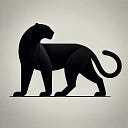Twin Worship: How the Dioscuri became the Gemini Constellation
catasterize — to turn into a star, constellation, comet or other celestial object
Twins belong to the category of the uncanny (the unheimlich) which Freud identifies as that which is ‘frightening precisely because it is not known and familiar’. It is for this reason, he says, that the uncanny is concerned with ‘the idea of a “double” in every shape and degree, with persons, therefore, who are to be considered identical by reason of looking alike’. Although he does not explicitly mention twins, there is certainly something uncanny about such a doubling (think about the Grady twins in The Shining — Kubrick changed them from sisters to twin sisters because there is clearly something uncanny about twins).
It is perhaps because of this uncanniness that twins have, throughout history, been subject to both veneration and fear. In his book, Twins: Superstitions and Marvels, Fantasies and Experiments, William Viney writes that twins have been both ‘honoured as gods and destroyed as toxic dangers’:
Within relatively small geographical areas, one community could kill or abandon twins while another revered them. Despite these differences, twins are frequently thought to be at odds with conventions of personhood–wrongly born, spiritually abominable, too godly or too animal (Viney)
One of the oldest examples of such twin worship belongs to the ancient Indo-European tradition in which the widespread archetype of the ‘Divine Twins’ is derived.
The Divine Twins, which have ‘been known from the earliest times, and from civilisations across the globe’ (Noyce), were worshiped, at times, as ‘divinities of fertility’ (Ward), but more often as rescuers (at sea) and healers (in battle). They are usually depicted on horseback with what is known as a pilos hat (pictured below).
In most of the stories surrounding the Divine Twins, there is also the motif of dual paternity. In earlier times, people believed that twins were the result of two separate conceptions with two separate individuals — one of which usually being a deity. In modern biology, this is known as ‘superfecundation’ and it does actually occur (albeit very rarely). As Donald Ward writes in his study on the subject, the theory of dual paternity was reflected in the twin’s often contrasting character:
In view of this widespread belief that twins are the product of two fathers, it is not surprising to learn that mythological traditions frequently emphasize the difference between divine twins. There are many well-known examples of this concept. Ormuzcl represents light; his twin, Alirimann, represents darkness. Esau is the bold, vigorous huntsman; Jacob, the docile shepherd. Amphion is a musician; his twin brother, Zethos, is a huntsman […] Furthermore, since one member of a pair of twins is often considered to have been fathered by a god, one encounters many traditions in which one twin is considered mortal, while the other is immortal. The Greek Dioskouroi, Kastor and Polydeukes, represent merely the most famous example of this concept (Ward)
The Dioscuri — Castor and Polydeuces — were the Greek variant of the Divine Twin archetype. They were the sons of Leda, the Queen of Sparta, and the brothers of the infamous Helen of Sparta (the face that launched a thousand ships). According to the myth, however, their fathers differed, ‘as Leda had been impregnated in the same night by her husband King Tyndareus and Zeus’:
This varying parentage differentiated the brothers, for [Polydeuces] was immortal, whilst Castor had the frailties inherent to mortality. However, this did not weaken the relationship between the brothers, who were devoted to each other. They grew up together, each specialising in an athletic skill: Castor was renowned for his equestrian prowess, and [Polydeuces] for his talents as a boxer
The Dioscuri show up in several of the ancient Greek myths (including Helen’s initial kidnapping, the hunt of Calydonian boar, the quest for the Golden Fleece etc.). But perhaps their most memorable contribution to Greek mythology is the death of the mortal twin, Castor and their subsequent catasterization:
when [Polydeuces] discovered his dying brother, he begged his father Zeus to allow him to give up his own immortality so that his brother might live, preferring to surrender his place on Olympus than to be without his twin. Zeus agreed, sharing [Polydeuces’] immortality between the brothers, allowing them to divide their afterlives between Olympus and Hades. […] To honour their fraternal love, the two were also celebrated amongst the stars by the constellation Gemini (Gartrell)
For reasons that are not entirely clear, the cult of Castor and Polydeuces ‘possessed extraordinary resonance and longevity’ (Gartrell). The same could be said of the entire Divine Twin archetype. Today, there is no more overt twin worship (and science has demystified their biological origin), but a secular ‘Dioscurism’ exists; what Jacalyn Duffin calls a ‘universal Dioscurism’; i.e. ‘a tendency throughout the world to use, think about and venerate twins’:
The human condition, she argues, is expressed in an unwavering psychological model formed of opposites, and thus twins help to acknowledge ‘the permanence and significance of dual archetypes in the human mind: the supervitality of the double birth and the natural harmony of primal opposites, uniting earth and sky, day and night, disease and health, life and death’ (Viney)
